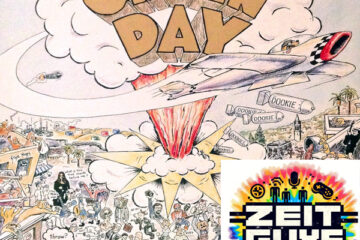What Is America? (1850-1930) Isabella Grigsby
During the time period of 1850-1930, America experienced an exponential amount of growth. With America economically becoming more stable, and able to stand on its own, focus shifted to social issues. Although America was built on the beliefs of the American Dream being available for all, in actuality it was only available for a select few. America at this time, exemplified a tale of two cities where on one side the wealthy prospered and on the other the working class continued to suffer. As wealth and power in America during 1850-1930 continued to grow, so did the gap between rich and poor, sparking a desire for freedom, equal rights, and unity.
Titans of industry such as Henry Ford, Andrew Carnegie, Thomas Edison, J.P. Morgan, and John D. Rockefeller dominated the railroad and manufacturing business during this time. Such a small pool of men controlled the majority of the American economy causing a major difference in social class. These men had so much money, if they wished to withdraw it all at one time, the bank would not have enough. Innovation and Mass production of products were the main source of wealth. Thomas Edison and Alexander Graham Bell constantly created new inventions that would forever change the realm of technology and everyday lives. With so much production, the Titans of Industry were responsible for the grand wealth and industrialization of America during this time period and the source for many working Americans’ living. Huge
manufacturing factories offered hundreds of jobs, filled with mostly immigrants and minority groups, which these men did not pay well for their laborious work.
How the Other Half Lives by Jacob Riis is a powerful collection of photographs taken in the slums of New York. These photographs capture people, working conditions, tenement conditions, and child labor. Oftentimes families needed all the money they could get because the pay they were earning was simply not enough to sustain them, so many children started working in the factories at early ages to support their family. One photo stands out called “The Boy in the Glass Factory,” featuring a young boy isolated in the midst of the chaos of work. Because the boy stares directly at the camera, he evokes compassion and sympathy from the viewer. It is believed that the boy is around twelve to fourteen years old, but by the wear and exhaustion of his body, he looks to be beyond his years. His body looks to be small from his age, but in reality, it is most likely due to malnutrition and being overworked. Riis took this photo in a glass factory, which was not an industrial factory, but an extremely dangerous line of work. Glass factory workers were mainly young teenage boys who dealt with hot glass, clutter, and debris. By capturing such impactful photos, Riis was able to show how drastically different the sides of society lived at the time.
The American Dream is that through hard work everyone can earn their way to success. Unfortunately, this notion was not the actuality for many Americans, which can be seen in Merle Travis’ “Sixteen Tons.” Travis was born in Kentucky to a family of coal miners and shares his first-hand experiences of the working conditions. Because working ages at this time were so low, many coal miners were uneducated and had “a mind that’s weak and a back that’s strong.” It was common for the youth living in poverty to miss an education but earn a living for their family.
Travis also explains how miners were often just seen as an employee, rather than a person. In the chorus he goes on to say, “You load sixteen tons, what do you get? Another day older and deeper in debt… I owe my soul to the company store.” Here, Travis is directly referencing the
non-transferable credit vouchers to the company store that coal miners were paid with that would generally bring debt upon the miners. Therefore, a job as a coal miner was labor intensive and taxing on the body, yet offered very little payout, which was unfair to the workers and the complete opposite to the rich at the time.
“School Begins” is a political cartoon created by Louis Dalrymple that features Uncle Sam ridiculing indigenous people from newly gained territories. The cartoon displays how immigrants and minorities were treated in America and how they were taught to conform to American ideals and culture. The children sitting in the back of the classroom represent existing states of the US that are well behaved and proper. In front of Uncle Sam, Puerto Rico, Hawaii, Cuba, and the Philippines are represented by indigenous people who need the guidance of Uncle Sam to learn how to be a proper citizen. Uncle Sam exemplifies American Exceptionalism and the White Man’s Burden because it was believed that only America would be able to civilize these people. The cartoon also shows how some minorities were left on the outskirts. A black man can be seen in the classroom, but only to clean the windows and do housework. At the door there is a Chinese girl pictured, but she is not allowed to come in, while a Native American is sitting right inside the room but is not enabled to learn. Some indigenous people and minority groups were given an opportunity, but in most cases, they were ignored and shunned from society, which is made clear in Dalrymple’s “School Begins.”
Booker T. Washington’s “Atlanta Compromise” speech explains how African Americans make up too much of the population to ignore any longer, and by working together the economy will benefit. Integration of African Americans into Southern society stood at the forefront of Washington’s argument because “one-third of the population of the South is of Negro race.” Therefore, many aspects of the government and market can be influenced by this fact, meaning it is in everyone’s best interest to coexist. Washington argues that just because African Americans have previously been viewed as lesser than, that was not true then and is not true now. He supports this belief by stating that “no race can prosper till it learns that there is as much dignity in tilling a field as in writing a poem. It is at the bottom of life we begin, and not at the top.” With this statement, Washington proves that no race is better than the other, and each person has their own starting point in order to reach their maximum potential. Washington was one of the few who realized that utilizing the mass, knowledge, and skill of the African American community will only benefit both parties instead of continuing to exploit the rewards of their labor because of the color of their skin.
Even though during this time period America experienced extreme growth, power, and wealth, it lacked maturity in terms of socioeconomic and racial inequalities. A country that prides itself on liberty and justice for all, failed in making it a true reality. (1164)
“This is America” by Zane Johnson
The period between 1840 and 1924 was a time of substantial change in American history. It began with war and concluded with the war, saw the arrival of waves of immigrants, the freeing of enslaved people, the rise of industry and wealth, and the struggle for civil rights. The period from 1840 to 1924 significantly impacted what it means to be American today.
The Civil War was a defining moment in American history, leading to the abolition of slavery. This war played a meaningful role in shaping American identity and nationalism. The triumphs in this war instilled a sense of pride and patriotism for some Americans and shame for others. Ultimately, this led to a greater belief in American exceptionalism and the importance of American values. The abolition movement and the Civil War were also important factors in defining what it meant to be American. The abolition movement challenged the country’s fundamental values, and the Civil War led to the end of slavery and the recognition of African Americans as citizens. This struggle for civil rights persists today, but the Civil War significantly shaped how African Americans live today and American identity.
Western culture also significantly impacted what it meant to be American during this era. The concept of manifest destiny, the belief that Americans were destined to expand their way of life across the continent, was central to the western culture that influenced American identity. In 1872 John Gast painted a piece named “Manifest Destiny” that depicts a woman representing America moving across a rural plain. As she moves across the canvas, everything behind her becomes industrialized. This manifest destiny ideal allowed many to stay hopeful in times of despair. The western frontier represented the spirit of individualism, self-reliance, and adventure integral to American identity. The stories of cowboys, pioneers, and explorers helped to create a mythology of the west that still exists in the media today. Western culture also contributed to the belief in American exceptionalism, the idea that the United States was a unique and superior nation. This belief in American exceptionalism has continued to influence American identity and politics.
Inventors and investors like Thomas Edison, Henry Ford, and JP Morgan exemplified American exceptionalism during this era. They were innovators who transformed American industry and society. Edison invented the electric light bulb and the phonograph, among other things. Ford, the founder of the Ford Motor Company, revolutionized the automobile industry with his assembly line, making cars affordable for the average American. JP Morgan was a powerful financier who helped to finance some of the most significant projects of the era, including the construction of railroads and the creation of General Electric. These men embodied the American ideals of innovation, entrepreneurship, and hard work that were newly discovered during this period. They became symbols of American exceptionalism; their great success and prosperity contributed to the belief that the United States was a superior nation destined for greatness.
Immigration also played a significant role in shaping American identity during this era. Waves of immigrants, primarily from Europe (Italians, Irish, Germans), arrived in America seeking a better life. However, their arrival was met with resistance and discrimination. There was a predetermined notion that all other races and ethnicities were inferior. In voting, there was an idea that all minorities were too dumb to vote, as depicted in “The Ignorant Vote” cartoon.
The ignorant vote was a cartoon depicting caricatures of an Irish and a black man; they were set on a scale to show that the black and the Irish vote essentially cancel each other out. Immigrants were forced to work long, demanding jobs in the workforce for very little money. People like Lewis Hine tried to capture the sad and harsh environment that many immigrants were forced to work in with his photographs, such as “The boy in the glass factory.” Hine’s photo shows a young, malnourished boy working in an industrial factory. One of America’s greatest disappointments was the discrimination and prejudice against minorities, especially in the workforce, since the “American Dream” is supposed to be that anyone can prosper in america. The use of child labor was cruel and unjust. Sadly child labor is still prevalent today. While it is less common in American factories, many American-based companies that outsource production still use child labor, such as “Apple, Microsoft, and Philip Morris” ( Career Addict, Phillpott). Despite the many setbacks, immigrants have become an integral part of america today.
In conclusion, the events and movements between 1840 and 1924 significantly shaped what it means to be American. Wars, immigration, abolition, civil rights, and capitalism all contributed to American identity development. These events and movements challenged traditional American values and ideals but also helped create a more inclusive and diverse society. Ultimately, this era’s struggles and triumphs helped define what it means to be American today.
What is America? by Deeley Arciero
America has gone through many changes, the Civil War, and World War I, between 1840 and 1930. These events have resulted in social effects and geographical expansion for America. Although, the treatment of African Americans and immigrants have not changed throughout the course of this time and arguably have gotten worse. From 1840 to 1930, America was a place of expansion through land and people, a place of false hope for immigrants, and a place of mistreatment for African Americans.
These specific years of America include an impactful expansion of the country, adding more states and territories than ever before. There is an argument to whether these expansions are necessary to America, especially considering that the country is directly taking land from native people. Many political cartoons were made to discuss this spread of America, including School Begins by Louis Dalrymple in 1899. The cartoon depicts Uncle Sam teaching the Philippines, Cuba, Hawaii, and Puerto Rico how to be American. The islands are depicted as uncivilized and not properly dressed children, making them appear as if they need the saving grace of America to help them. In fact these islands did not want to be under the control of America, but this objection did not stop Americans from attempting to add them to the United States. The cartoon plays into the idea of America possibly taking over too much land to the point where it is not necessary and instead hurtful. In another political cartoon Imperialist Tailor, released in 1900, Uncle Sam represents the growth of the nation, including the names of new states and territories on his pants. Although, he is shown as an overweight and possibly gluttonous man, representing that America might be biting off more than they can chew and taking too much land. These expansions are not extremely helpful for America and only show the power of America. On the other hand, they are harmful to the cultural and social norms of these people and countries that have been taken over. They are being mistreated and seen as the equivalent to a charity case for America rather than people. Similarly, people who immigrate to America on their own are being treated poorly and targeted as not being American enough.
Due to war-torn countries, social reasons, and cultural reasons, this period has an influx of immigrants entering the United States. America is a mix of many different cultures and races, considering that most citizens were not native to America. The country keeps this no secret and even portrays this idea of welcomeness on the Statue of Liberty. The plaque on the front of the statue features a poem by Emma Lazarus called “The New Colossus.” The poem personifies Lady Liberty as a “Mother of Exiles,” who will welcome all immigrants into America with a “world-wide welcome.” Lazarus’ description of America makes it appear as if the country is a safe haven for immigrants from anywhere in the world. Even though America puts on this front of being hospitable and a mixing pot of people, the citizens are not as hospitable as they are made out to seem. An interesting example of this hatred towards immigrants is a story discussed by Dr. Hoffmann in his lecture. Sacco and Vanzetti were two Italian, anarchists who were accused of robbing a factory and killing a man. However, it would have been impossible for these two to commit these crimes, yet they were still convicted and executed. This case led to an outbreak of hate towards both Italians and Catholics. The Sacco-Vanzetti case is just one of many times when immigrants had not only been wrongfully accused but also targeted because of their religion or nationality. Although, during this time this mistreatment also affected African Americans.
Since the beginning of America, African Americans have been treated as lesser people than white Americans. The mistreatment and inequality due to race runs deep, even in the country’s most patriotic and American songs, such as “My Country ‘Tis of Thee.” A.G. Duncan realized the lack of truth in this song and rewrote it with a harsh truth. He included the line “where all men are born free, if white’s their skin,” showing the false tale of freedom for all in the original song. In reality there was not freedom for all, there was only freedom for white Americans. The ideology demeans African Americans and almost says they are not real Americans. Sadly, the years of 1840 to 1930 are no different. Even though slaves were freed during this time period, the mistreatment of African Americans did not stop. America, especially the South, was built on the backs of enslaved people, but they were never given the credit they deserved. As Booker T. Washington described in the “Atlanta Compromise Speech,” African Americans, “without strikes and labor wars” worked to “make possible this magnificent representation of the progress of the South.” Washington, mainly having an audience of white farmers, is calling everyone to be inclusive to the people who helped them get where they are today. However, this did not change the treatment of African Americans throughout the country, especially in the Southern states, showing just how horribly African Americans were treated by these white Southerners.
Overall, from 1840 to 1930, America was a place of growth in power and land, a place of hatred towards immigrants, and a place of consistent injustice for African Americans. From taking too much land, to targeting people because of their nationalities and race. America has gone through many changes geographically as well as stayed the same socially during these years.


